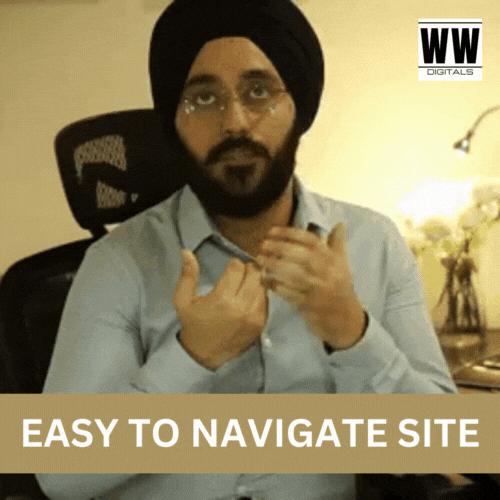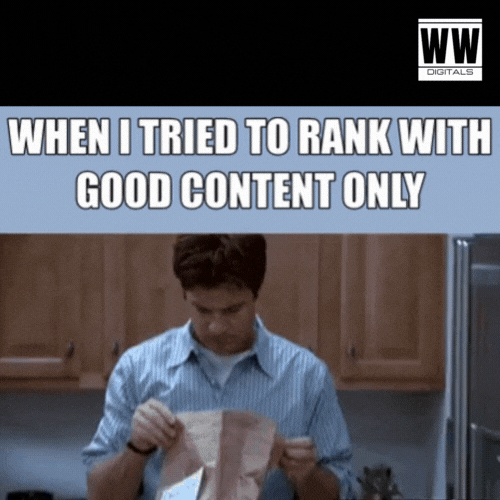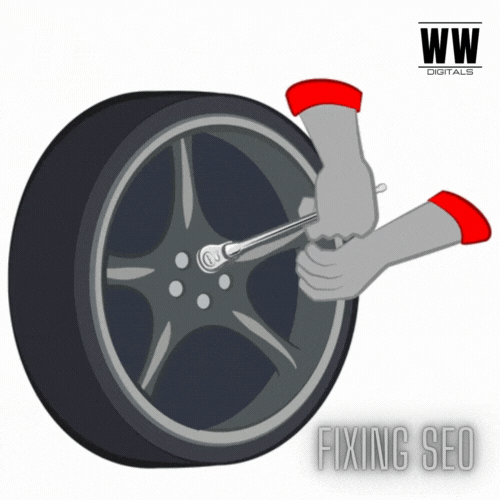Search engine optimization, also called SEO strategy, is not magic or an obscure science. It aims to optimize a website to make it understandable by search engine algorithms.
Below are 60 recommendations intended to give you the right track to succeed in your SEO strategy to be ranked first on Google by respecting the ranking criteria as closely as possible.
There is no such thing as free SEO, it requires a lot of work to meet the criteria of search engines and satisfy readers in order to obtain quality traffic.
Related topic: 7 Tips Generate Traffic To Your Site With SEO
What are the recommendations to follow at the technical level?

1) Create an XML sitemap
For large sites and to facilitate the exploration of search engine robots, the establishment of a sitemap to be submitted via the Search Console is a good practice. The Sitemap allows the search engine to be informed of the addition of new pages and modifications of old ones.
2) Create a robot.txt
The robot.txt is a file that allows search engines to know which parts of the site they should index or not. With this file, you can ask the robots not to index certain parts of a website. It also allows you to give the sitemap address.
3) Identify the exploration errors
The analysis of logs and crawling errors allows you to detect many problems on your site and facilitate the work of search engines. By analyzing your logs and the alerts given via the Search Console, you will be able to identify dead links, 404 errors, redirection problems, and missing images…
4) Create useful 404 error pages
It happens that visitors arrive on 404 error pages. It’s always a shame to lose a visitor, especially in e-commerce, after all the efforts made to attract them. By customizing 404 error pages, you give visitors the opportunity to continue navigating to other parts of the site, preventing them from being permanently lost.
5) Set canonical URLs on duplicate content
Related topic: How to optimize SEO and content marketing to improve your site.
Canonical URLs are a useful tool. They allow you to tell search engines which versions of the same content to take into account. Defining canonical URLs avoids the problems of duplicate internal content, the main problem when creating a multitude of almost identical pages with different variables in the URLs.
6) Optimize the crawl budget
Google has a crawl budget. In order to save resources, it assigns to each site a number of pages to be crawled each day. For large sites, the multitude of uninteresting pages can affect the visibility of the most useful pages.
It can therefore be positive to study the behavior of the bots on your site thanks to log analysis and thus optimize the passage of the bots on the most performing pages for your SEO and conversion.
7) Use permanent redirects (301)
301 redirects allow you to redirect bots and users to other content. When you delete content or change the URL of a page, the 301 redirect allows you to redirect to the new URL or to content close to the deleted one. This prevents users from landing on error pages and search engines from taking into account the new content URL.
8) Repair the errors identified by the Search Console
The Search Console allows you to follow the indexation of your site on Google, identify errors, and sometimes even receive a message indicating a manual penalty. It is therefore important to create an account and then register your site.
Related topic: SEO Legends And Myths To Ignore In 2023
How does the user experience work?

9) Having a fast site
Having a fast site is important for the user experience. A site that is too slow will drive away users and lower your conversion rate. You must therefore take all necessary measures to improve the speed of your website. There is a multitude of levers to improve performance:
- Choose your CMS well.
- Reduce the code.
- Optimize images.
- Use a CDN.
- Have a powerful host.
- Optimize the databases.
10) Have a simple navigation
Whether it is for Internet users or search engines, simple navigation allows one to find easily what he looks for the Internet user and to navigate from page to page. For the search engine, keeping all the pages within three clicks of the homepage optimizes the crawl of the site and the passage of the robots on all the pages as regularly as possible.
11) Switch to HTTPS
Google has indicated giving a small bonus to sites migrating to HTTPS. This is a reassuring element for Internet users. More and more browsers clearly indicate when a site does not use this protocol, which can cause fear in the visitor.
When switching from HTTP to HTTPS, you must follow a well-defined protocol so that search engines take into account the changes in your site’s URL.
12) Avoid interstitials on mobile devices
Interstitial ads should be banned. They are a nuisance to visitors and can lead to penalties for user experience. Your site must be ergonomic, easy to navigate, and offer a quality user experience. Overuse of ads and bad placements can hurt your strategy.
13) Create a mobile-friendly site
Cell phone visits can account for more than 60% of visits. Not thinking about your marketing for mobile is nonsense. The mobile version must not be a simple adaptation of the PC version, it must be thought for use on smartphones. Google gives it a primordial importance and your conversion rate will also be strongly impacted.
How does the content work?

14) Take into account the search intent
The search intent of Internet users must be the priority. The days of simply trying to position yourself on keywords are over. Today, Google works to detect the search intentions of its users in order to propose to them the adapted content. Creating content that responds to these intentions is therefore the priority in order to try to position yourself on the different searches and to propose content that is in line with the needs of the Internet user.
15) Avoid duplicate content
Duplicated content is a hindrance. Why would Google waste its time processing several identical texts? It is a waste of resources for him and the Internet users. You must therefore be careful not to use it within your site, but especially outside. Plagiarism and use by third parties should be monitored.
16) Optimize long-tail keywords
Long tail keywords are to be worked on. Sometimes easier to target, because they are less competitive, they also offer a more precise search intention, and therefore a higher conversion potential.
Working on long tail keywords allows you to capture traffic more quickly than by seeking positioning on shorter and often more competitive keywords. Working in this direction can save time and generate the first conversions more quickly.
17) Find out which keywords generate search traffic for your competitors
Watching your competitors is a good practice. A multitude of tools allow you to monitor your competitors’ strategies and better understand the reasons for their success. By finding the keywords on which they position themselves, you could perhaps find untapped opportunities and sources of visibility that you hadn’t thought of.
18) Use structured data
Structured data allows search engines to better exploit your content. The enrichment of search results is largely enhanced by this information. Your site can take advantage of this and obtain increased visibility by using the multitude of Rich Snippets available.
19) Optimize the title tag
The title tag is important for a good SEO strategy because it gives the search engine strong indications on the subject of the page but also plays a key role in terms of inciting clicks for Internet users. A catchy title will optimize your click rate in the results and thus optimize your visibility without the SERP.
Read also: Definitons of acronyms SEM, SEO, SEA, SMO, SMA, SXO, CRO in Digital Marketing.
20) Optimize meta descriptions to increase
The meta description has no impact on the positioning. However, like the title, it plays an important role in terms of CTR. A catchy description can encourage users to choose one result rather than another. So take advantage of this space to indicate your values and encourage them to come and discover the content.
21) Structure the texts with Hn tags
Well-structured content is important for the user as for the search engine. The use of Hn tags to structure your content and its different paragraphs is a necessity. Beyond the structural aspect, it is also important to integrate keywords and synonyms of the subjects you are addressing. It is a good practice to have headings that answer the questions of Internet users on a specific subject.
22) Insert your target keywords in the first 100 words of your content
The introduction of your content must clearly announce the subject. Placing the most important keywords and synonyms is a good practice. Keep it fluid and not overused. Writing guides help writers structure their texts and use semantics in the best possible way.
23) Create outbound links
Do not be stingy on external links. The web is built on links. By giving your readers a link to other quality content you make your content better. Creating an external link does not deprive you of anything, it enriches your purpose and can even strengthen the relevance of your page and advance its SEO.
24) Optimize your content for featured snippets
Featured snippets can increase the visibility of your website. Depending on the type of queries, it can be interesting to work on being in position 0 and get high visibility.
25) Give answers to specific questions
Internet users have specific questions. By answering these specific questions, you reinforce their relevance and the chances of being proposed to Internet users. Google is becoming more and more of an answer engine and the future may belong to voice search.
26) Create quality content
Content is King, as the English say. Quality content is not necessarily long content, but it must respond to the search and the intention of the user. Quality publications attract shares and therefore links. They reinforce your credibility and your content marketing strategy.
Creating semantically rich, interesting, and optimized content will be an essential basis for your visibility strategy.
27) Enrich the semantic field of the pages
Optimizing the semantic aspect of pages is fundamental. Software now helps writers to produce semantically optimized texts for search engines. To understand the content, Google needs to identify a certain number of signals.
By including in texts the lexies that are essential for understanding a subject, you give the search engine the material its algorithms need to rank content.
28) Include calls to action
Getting hits is good, and converting is better. Positioning your pages in search engines is not an end in itself. The final goal is to convert and make your visitors perform specific actions (call, register, buy…). Your pages must therefore contain calls to action and encourage users to perform them.
29) Make it easy to read
Easy-to-read, well-structured, and well-spaced content will help Internet users stay on your site. Fonts must be readable, and airy, and this is on all media. Bullet lists are a good way to prioritize ideas and get to the point.
Related topic: On-page SEO: 11 Techniques To Boost Your Rankings
30) Vary the media
A content marketing strategy should not only rely on text. Use images, videos, drawings, podcasts, and infographics to enrich your text and convey messages on other media.
31) Use short and descriptive URLs for your content
Use short and descriptive URLs. Search engines display page URLs in their results. Well-formed, short URLs with the main keywords can stimulate clicks, especially in e-commerce.
32) Update your content
Updating your content reassures Internet users and shows that you remain active. Old content can be positioned, it is not a hindrance, but in certain themes, the freshest are in the spotlight.
It is also more reassuring for a user to read content that he knows is up to date, rather than old content whose relevance he is unable to assess. Updating content will therefore have a positive impact on algorithms and readers.
33) Delete or rework poor-quality content
The contents of bad quality can be sanctioned. It is therefore preferable to enrich those too thin and of poor quality or to delete them completely if they do not bring anything. The Panda penalty punishes sites that are not considered qualitative, using short texts without added value.
34) Merge those who cannibalize each other
Google may have difficulty choosing between several contents dealing with the same subject. In this case, a good practice can be to group these articles into one in order to create a complete and qualitative article on a subject. He will then have only one content to analyze and put forward in order to avoid the cannibalization of keywords.
35) Optimize content for voice search
Voice search will become more and more important in the future. Voice searches are most often formulated as questions. Producing content that answers questions in a concise manner can be a good advantage for positioning yourself on voice queries. As popularity is also important to be proposed as an answer, link building should be worked on.
What is the role of popularity and links?
36) Avoiding penalties
Penalties can sign the death of a website. They are not always final and irreparable, but in order to ensure the sustainability of a company, it is necessary to avoid them as much as possible. A good SEO strategy requires taking controlled risks and to adapt its strategy according to its objectives.
Different strategies can be put into action, more or less aggressively, depending on your needs. But from a long-term perspective for a particular site, it is better to limit risky actions.
37) Work on internal linking
The internal linkage alone can have a positive effect. Linking pages to each other in a logical way while respecting semantic shifts will bring legitimacy to your site. A good internal linking will also facilitate the crawl of robots between your pages, not leaving any isolated in the tree of your site.
38) Facilitate social sharing
Shared publications receive more easy visits and backlinks. Do not hesitate to facilitate these shares by encouraging readers to do so and by offering them features to simplify this sharing on social networks or others.
39) Find the backlinks of your competitors
Monitor the link-building strategy of your competitors. By trying to find out where your competitors’ backlinks are coming from, you’ll see what strategies are working (or not) and could potentially solicit the same links if possible. In all areas of a good SEO strategy, you’ll learn a lot by watching others, even in areas you don’t work in.
40) Buy quality links
Buying links has become a way of life. Today it is a widely used tactic and the number of platforms is growing. However, you must make rational purchases, at justified prices. Links are often sold at prohibitive rates, in no way justified from an SEO point of view. Prudence and frugality.
Read also: White Hat SEO versus Black Hat SEO – Definitions & Differences
41) Remove/disavow all harmful links
Beware of toxic links. Some poor-quality links can jeopardize your strategy and lead to penalties. In the best case, try to have dangerous links removed. At the very least, have them disavowed with the tool provided by Google.
42) Find opportunities for broken links
Fixing broken links is a good strategy. It is difficult to get links, so it is essential to ensure that you keep the ones that exist. If a link is inadvertently broken, contact the sites to have them corrected or point to the most appropriate ones.
43) Work on a natural link profile
A natural link profile is the best protection against algorithmic penalties. A suspicious link profile can trigger the wrath of Google. By observing the link profiles of leaders in your sector, you can get an idea of the links obtained and draw conclusions. Always keep a margin of safety. What works today may not work tomorrow.
44) Get links from authority sites in your field
Getting a link is good, getting a link from a site that is an authority in my field is necessarily better. Quantity does not always rhyme with quality, especially in terms of linking. It is better to avoid a bad link than to take it. Getting links from qualitative sites should be the priority. A qualitative site does not necessarily mean a very well-known site, but it must be of quality and especially in your theme.
45) Stimulate link baiting
The best way to get links is to provoke them. It is possible to stimulate sharing and attract links naturally in number. Infographics and buzzing content are conducive to the natural creation of large numbers of backlinks.
According to the Guidelines, these are the only natural links really allowed.
46) Do not give in to temptation
Getting links quickly can be detrimental. Links appear over time, with the growing popularity of your site. Being too quick in acquiring links can attract suspicion.
Thinking to go faster by buying low-quality links at rock-bottom prices is also a suicidal strategy. SEO takes time, keep this in mind to build a sustainable visibility strategy and avoid falling into the traps.
47) Create your PBN
Use a private site network. We are never as well served as ourselves. By creating a PBN (personal blog network), you control your external link strategy without being dependent on third parties. You can refine your linking strategy, and modify it easily, without having to call upon others.
It is an effective strategy at the moment.
47) Create your PBN
Use a private site network. We are never as well served as ourselves. By creating a PBN (personal blog network), you control your external link strategy without being dependent on third parties. You can refine your linking strategy, and modify it easily, without having to call upon others.
It is an effective strategy at the moment, but it requires taking precautions in order not to be denounced by your competitors.
48) Monitor your backlinks
Monitoring your backlinks is essential for your linking strategy and has several advantages.
- Monitor your link profile.
- Remove toxic links.
- Identify what has positive effects.
- Identify dead links.
Related topic: 21 Tips To Generate More Traffic To Your WordPress Site
How to use SEO tools?

49) Install the Search Console
The Search Console is an essential tool to configure to follow the SEO of your site. This tool will give you a lot of useful information (indexing, positioning, penalties, site exploration, number of impressions, and visits…).
50) Configure Google Analytics
Analytics allows you to track your traffic. It is a complete tool that also offers other features. It allows you to know the origin of your visits, the behavior of your visitors, the time spent on each page, the bounce rate, and a multitude of other statistics.
The study of all this data can help you better understand your visitors’ expectations, and identify blocking points and opportunities.
51) Install plug-ins to boost your SEO strategy
Plug-ins are available to optimize the SEO of the most popular CMS. Yoast, SEOPress, and Rank Math are the best-known and used by website editors, mainly under WordPress.
They allow you to make up for missing features and solve certain problems that can have an impact on SEO, such as duplicate content.
The main functions that can be found in them are the following:
- Title and Meta description tags management.
- Generation of the sitemap file.
- Optimization of contents.
- Management of canonical URLs.
- Management of no index tags.
- Management of robots.txt.
- Inserting the breadcrumb trail.
- Etc…
52) Use keyword research
A good strategy involves keyword research. Knowing the requests that Internet users enter to find information, services, and products that a company offers is fundamental. This research allows us to find the most promising expressions, and the search intention and to create the adapted content to position them at the top of the results.
There are sometimes big differences between what customers type in the search bar and the jargon used by professionals.
53) Activate a caching plugin
Caching plug-ins allows you to increase display speed. In the context of optimizing the user experience, they can give a boost to gain precious seconds of loading speed.
What are some general SEO tips?
54) Define KPIs
The quantity of visits alone is not a sufficient metric to evaluate the success of a strategy. Other KPIs can be used to evaluate the performance of visibility efforts: rankings, conversions, bounce rate, visit duration, and page views…
55) Be patient with your SEO strategy
SEO takes time. The inertia can be several months for each action. They are evaluated over a year or more. By keeping this in mind, you will be less impatient and will have more serene relations with your providers.
Getting results and fulfilling the ranking criteria requires hard work to hope to be first on the targeted queries.
56) Stay informed with your SEO strategy
SEO is constantly evolving. Habits change, techniques evolve, and you have to adapt and modify your practices to keep up. What worked 5 or 10 years ago does not work today. The work of web visibility must adapt and sometimes reinvent itself. Anticipating changes and adapting your strategies are necessary to succeed in the long term.
57) Avoiding dream providers
SEO is a demanding discipline, with quality SEO strategy, who like any professional charge according to their skills and the work done. Avoid services that sell exceptional results for minimal fees. No one seriously commits to results, or to work for a few euros per hour.
Related topic: Backlinks: How To Find Sites That Will Link To Your Content
58) Complete your strategy with SEA
SEM = SEO + SEA. The visibility in search engines is optimal by using all options in terms of visibility. Mixing paid SEO (Google Ads) and free SEO strategy is therefore often a winning strategy that multiplies the effectiveness of both. SEA also allows you to test things in anticipation of SEO, and to get immediate visibility while waiting for the other visibility lever to progress.
59) Build a sustainable strategy
Search engine optimization takes time and is part of a long-term strategy. By working on your SEO strategy, you are working on the future of your company.
Do you want a quick and ephemeral hit, or do you want to deploy a long-term strategy? It is necessary to invest in safe strategies, master the risks, and take them by controlling them as much as possible.
60) Understand how it works
Understanding how Google works is an essential basis. To work well on your SEO strategy, it is important to understand the philosophy of a search engine. If the concepts of indexing, Pagerank, search intent, or semantics do not speak to you, you must look into the subject.



I decide to spend a few time on your site to see what it contains and so far, I think all your blog posts are easy-to-read, well-structured, and well-spaced. I can easily read and grasp what I am looking for. Keep up the good job.
Frank